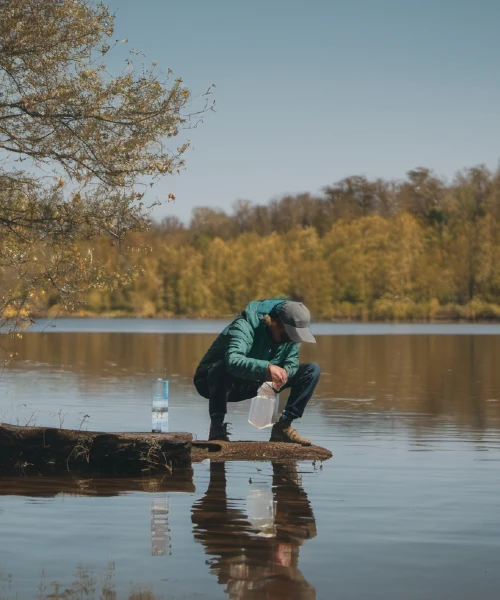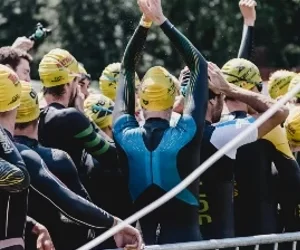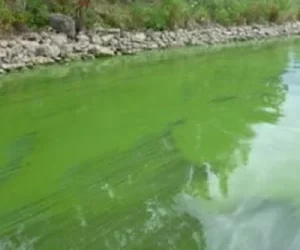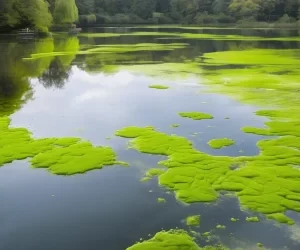Blue-green algae can be found in many bodies of water around the world, including in the UK. These algae blooms can occur in both fresh and saltwater bodies and are often more common in the summer months when the weather is warm and the water is stagnant.
Blue-green algae, also known as cyanobacteria, can produce toxins that are harmful to humans and animals.
There are several methods that can be used to treat a lake or other body of water that has a blue-green algae bloom. However, it is important to note that complete removal of the algae may not be possible and that it may take some time for the bloom to dissipate on its own.
Some options for treating blue-green algae include:
Increasing circulation and oxygenation: One way to help reduce the growth of blue-green algae is to increase the circulation and oxygenation of the water. This can be achieved through the use of aeration systems, fountains, or the addition of fresh water.
UV reflecting dye: A popular treatment is the use of UV reflecting dyes. These work by dissolving the dye through a water body which disrupt the process of photosynthesis. This results in submerged weeds and algae being unable to grow, but does requiring ongoing dosing to maintain the concentration of dye.
Using barley straw: Barley straw releases natural compounds into the water that help to reduce the growth of algae, and is considered a relatively safe and environmentally friendly method for controlling blue-green algae.
Adding chemicals: Algaecides or other chemicals can be used to kill the algae, although this approach may have negative impacts on other aquatic life and may not be a long-term solution. Permission is likely to be required from the Environment Agency prior to any chemical treatment, and care must be taken to ensure any banned herbicides are not added to the water body.
Using natural predators: Some species of fish and other aquatic animals are natural predators of blue-green algae and can help to control their growth.
Reducing nutrients: Blue-green algae thrive in waters that are high in nutrients, so reducing the amount of nutrients in the water can help to prevent or control algae blooms. This can be achieved through managing the inflow of water that the water body is fed from that may contain fertilizer and other nutrient sources.
The above methods are general approaches the treatment of blue green algae, and their effectiveness may vary based on the particular circumstances of a given body of water.
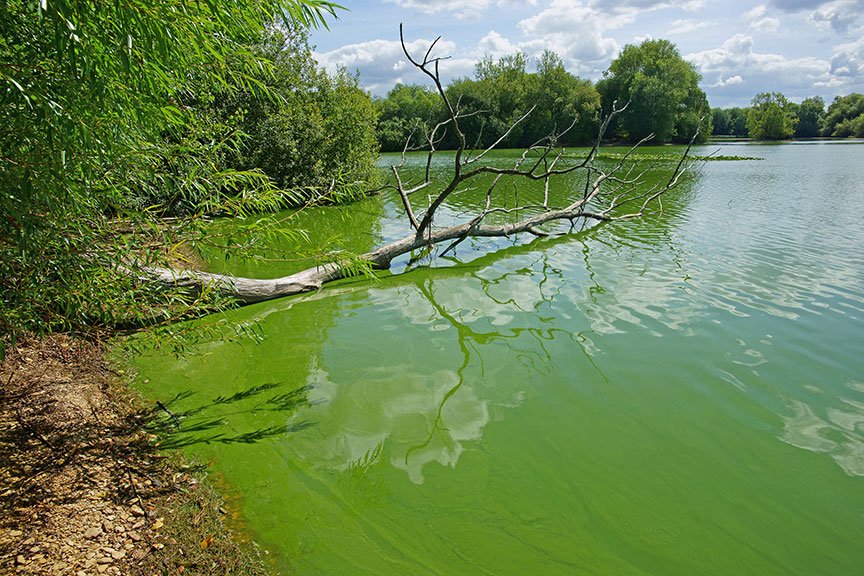
Barley straw to treat blue green algae
Barley straw is one method that has been used to help control blue-green algae blooms in lakes and other bodies of water. Barley straw releases natural compounds into the water that help to reduce the growth of algae, and is considered a relatively safe and environmentally friendly method for controlling blue-green algae.
However, it is important to note that the effectiveness of barley straw as a treatment for blue-green algae can vary depending on several factors, including the size of the lake, the amount of algae present, and the water temperature. In some cases, other methods may be more effective, and it may be necessary to use a combination of treatments to achieve the desired results.
It is also important to keep in mind that the use of barley straw should be part of a comprehensive approach to controlling blue-green algae, which may also include reducing the amount of nutrients in the water, increasing circulation and oxygenation, and using natural predators to help control the growth of the algae.
It can several weeks for barley straw to begin to have an effect on the growth of algae in a water body, as it is the compounds that are released as the straw begins to decompose, that compete with the algae and begin to limit its growth. Therefore, adding barley straw at the beginning of the season (spring or early summer) would achieve the greatest impact. Once added, the straw can take between 4-6 months to decompose, during which time it is effective at competing with blue green algae.
Due to the timescale for barley straw to begin to decompose and therefore take effect, adding barley straw to a water body that already has an algae bloom is largely ineffective.
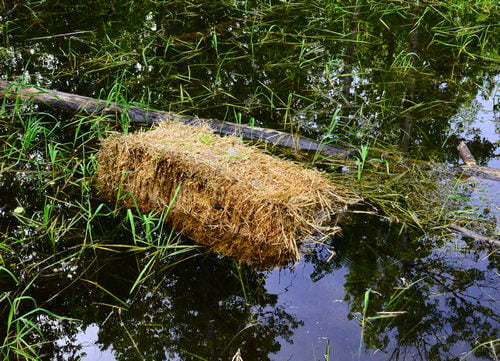


Increased circulation & aeration to treat blue green algae?
Increasing the circulation of water can help reduce the growth of blue-green algae by improving the distribution of oxygen and other nutrients in the water. Algae, including blue-green algae, need sunlight, nutrients, and oxygen to grow, and poor water circulation can create areas of stagnant water where the algae can thrive.
By increasing the circulation of water, you can help to ensure that oxygen and other nutrients are more evenly distributed throughout the water, which can help to reduce the growth of the algae. This can be achieved through the use of aeration systems, fountains, or other methods that increase water movement.
In addition, improved water circulation can help to reduce the buildup of organic matter and other pollutants in the water, which can contribute to the growth of blue-green algae. By keeping the water clean and well-oxygenated, you can create a less hospitable environment for the algae and help to prevent or reduce the growth of blue-green algae blooms.
It is important to keep in mind that increasing the circulation of water is just one aspect of controlling blue-green algae, and that a comprehensive approach that includes reducing the amount of nutrients in the water, using natural predators, and other methods may be necessary to achieve the desired results.
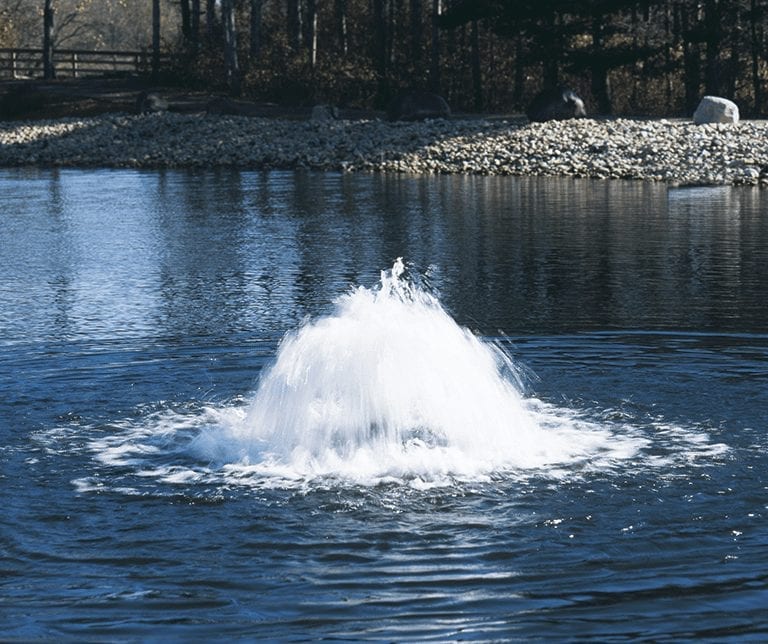


Using dye to treat blue green algae
Use of UV reflecting dyes to limit the growth of Blue Green Algae is becoming a popular method of treatment for commercial operators of water bodies (i.e. watersports centres, aqua parks, open water swimming venues) and the theory behind their use is that the dye dissolves through the water body, filtering the amount of UV light that penetrates the water and therefore limits the ability for aquatic plant life, such as weeds and algae to grow.
However, it is important to note that this does not specifically target blue green algae, but all algae and weeds. Effective treatment requires ongoing dosing through a typical season, which for larger water bodies, be come expensive.
Caution must be taken to ensure the correct dosing; as overdosing can can result in an imbalance in the ecosystem of a water body, and on some occasions allowing blue green algae to grow unchallenged as other competing algae and aquatic life are limited by the dye.
Use of dye is a long-term algae management solution. The addition of UV reflecting dye when a water body has already developed an algae bloom will have limited effect.
